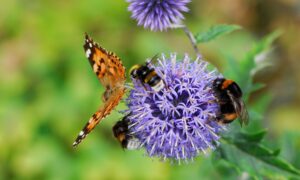
Looking to liven up your garden—and help the planet in the process? Whether you’re soaking up the sunshine in Fort Myers or enjoying the changing seasons in Pittsburgh, adding pollinator-friendly plants is a smart (and beautiful!) way to support local ecosystems while enhancing your outdoor space.
Pollinators like bees and butterflies play a vital role in our food supply. As they gather nectar, they also transfer pollen, helping plants bloom, fruit, and thrive. The best part? Creating a pollinator garden is easier than you think—and it can be tailored to your local climate and conditions.
Here are some simple tips to get started, no matter your zip code:
- Choose native plants: In Pittsburgh, coneflowers, asters, and bee balm are pollinator favorites. In Fort Myers, consider milkweed, blanket flower, or salvia. Herbs like basil and oregano work beautifully in both places.
- Stagger your blooms: Plant a variety of species that flower throughout the season to offer pollinators a steady food supply—and enjoy continuous color in your yard.
- Plant in clusters: Group the same plant types together to make it easier for pollinators to locate and feed.
- Skip the pesticides: They can harm pollinators and disrupt your garden’s natural balance.
- Think creatively in small spaces: Balcony gardener? Add a windbreak if you’re in a breezy high-rise or choose shade-tolerant pollinator plants like columbine or honeysuckle if sunlight is limited.
Pollinator gardens not only benefit the environment—they can also boost your home’s visual appeal and help it stand out in the neighborhood. In fact, with one out of every three bites of food depending on pollinators, every plant you add is a step toward a healthier planet.
Whether you’re prepping your Pittsburgh porch or your Fort Myers lanai, adding a little pollinator charm is always a win-win

